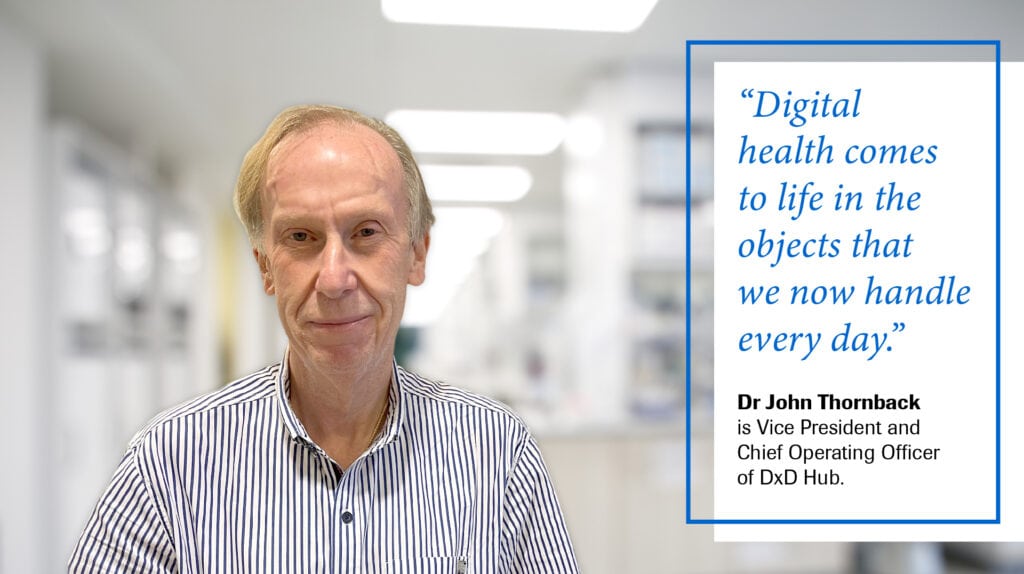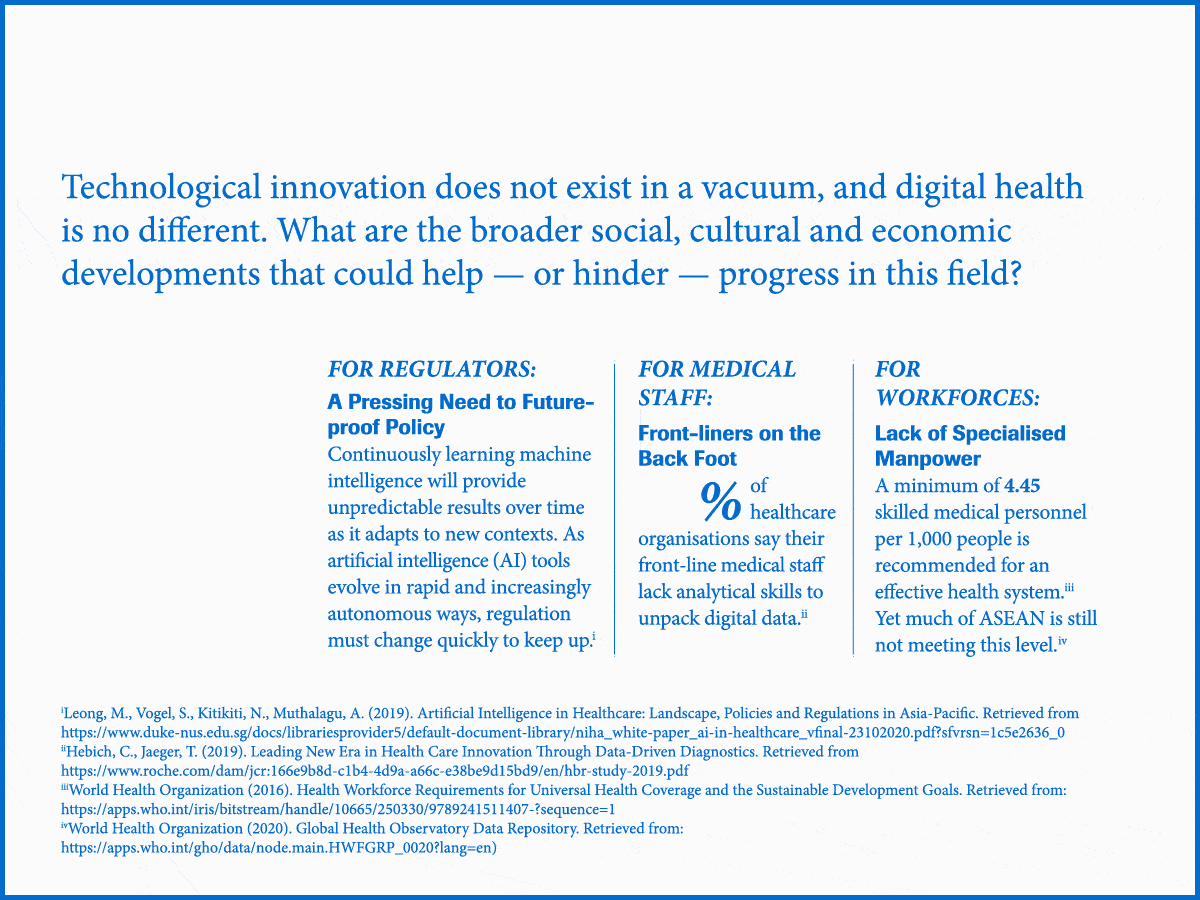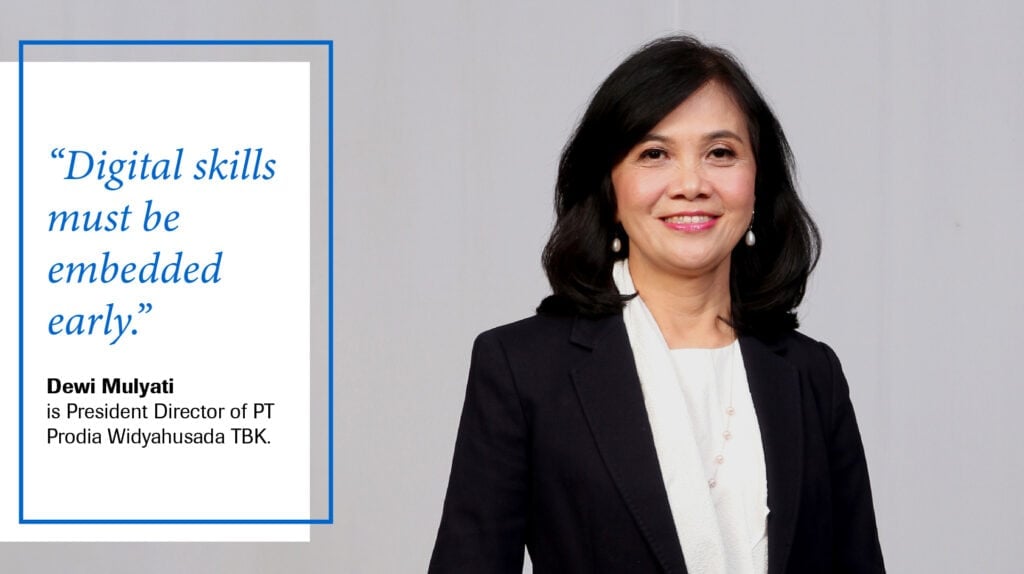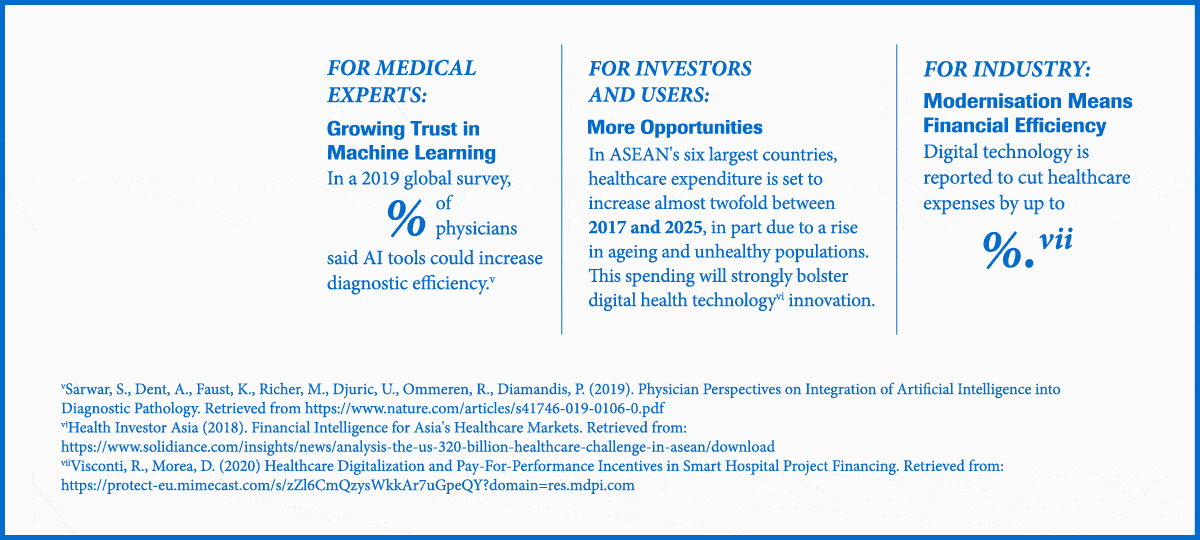The Building Blocks of a Digital Health Ecosystem
Dr John Thornback is Vice President and Chief Operating Officer of the Diagnostics Development (DxD) Hub in Singapore, a national platform hosted by the Agency for Science, Technology and Research (A*STAR) which aims to accelerate the transformation of IPs into clinically validated diagnostic devices that are ready for market adoption. He shares observations of a country that is well ahead of the health tech curve, and is now venturing into new territory — digital health governance.
Countries are still in the early days of regulating the world of digital health. The classic example is a smart watch. It is not a medical device, but there are apps within it which do have medical device uses. What part of the watch or software does the regulatory body have governance over?
Dr Thornback explains that identifying the parameters for regulatory guidance could help governments iron out the difficulties in how to classify, regulate and harness health technologies as they become more powerful and mobile.

Nurture Diagnostics by Supporting the Change-makers
Even before the pandemic, digital health was seeing an upward swing in Singapore. By some accounts, the ease of access to various resources across different stages — from funding and multidisciplinary talent, to research and development (R&D) — gives the city-state a clear edge.
But as with any new industry, as the frenzy of development kicks off, a centralised space where ideas can be tempered into reality can make considerable difference. For Singapore, that place is DxD Hub. Its ambitious goal: to bring together various players in the diagnostics and digital health space, whether clinicians, researchers, public and private enterprise, local or overseas companies,1 to fast track the development of clinically validated, market-ready diagnostic tools and solutions.
“What we do quite simply, is work with ideas from which we can work together with the inventors to develop products that can impact the health of Singaporeans and beyond. These could be from small companies or academic groups. We work hand in glove with them to help convert an idea to a product, and submit it to the regulatory agencies in Singapore, the US and Europe,” he shares.
“That also means our focus is on aspects that are relevant to the future of healthcare, and diagnostics such as Software as a Medical Device (SaMD). DxD Hub is a unique organisation which bridges the gap between the developers and regulators, set up to help developers to quickly get their products out while meeting stringent regulatory requirements.”
Related reading: Safety Versus Speed: Balancing Digital Health Innovation and Regulations
Tackle the Thorny Issue of Where a “Medical Device” Starts and Ends
Digital health comes to life in the objects that we now handle every day, and this is where things can get complicated. As highlighted by the Asia Pacific Medical Technology Association in its recent digital health survey, a common regulatory framework across the region would help to address issues of interoperability between systems, cybersecurity and safety of the medical devices.2
“A vital issue is how regulators are going to classify software that has a medical function, but is housed within a digital device that does not have a medical device function. This is where the often-cited example of the smartwatch or even smartphone comes in,” states Dr Thornback.
“What the recent APACMED report proposed was that only the portion that has a medical device function needs regulatory oversight. That is an exciting concept within medical device regulation akin to that the FDA has proposed. I suspect that is perhaps what is going to happen in most cases of SaMD in other countries.”
“Examples of such digital health software are those that rely on sensors included in many smartwatches that are intended for the diagnosis of conditions like heart irregularities and sleep apnoea,” he adds.

Grow the Talent Base
Talent development and knowledge transfer are critical, and DxD Hub is working with ecosystem partners to cross-pollinate medical and product development skills.
“By exposing people to what it means to work in a highly regulated environment, and what it takes to develop a SaMD product or in-vitro diagnostic, we can encourage a shift towards an agile mindset, and spur innovative thinking outside of traditional sectors.”
He adds, “We have been working on an initiative sponsored by a council of ministers of ASEAN countries along similar lines. We are looking to help develop their diagnostics industries, and upskill their workforce on how you develop products. We see a lot of very smart engineers and scientists here: what we do is give them skills to become product developers, quality assurance people — all the tasks necessary to strengthen the future generations of talent for the medical diagnostic and digital health ecosystem.”
Keeping Up with the Digital Health Revolution
Unlike Singapore, Indonesia does not yet have a thriving digital health ecosystem.

But it has tremendous opportunities that can benefit over 270 million inhabitants,3 according to Dewi Muliaty, President Director of PT Prodia Widyahusada TBK, a clinical laboratory network in Indonesia, provided the country tackles systemic issues.
While internet penetration is skyrocketing, (the number of internet users increased by 25 million between 2019 and 2020)4, patchy health and technology infrastructure, low levels of connectivity and the lack of investment in electronic medical records suggest that the makings of a basic digital health system are far from ready.
How can the archipelago of more than 17,000 islands prepare itself for this future world?5 Dewi Muliaty shares her thoughts.
A Booming Industry Needs Equal Progress
Digital health is growing quickly in Indonesia. According to one estimate, digital health revenues are expected to grow strongly, reaching USD726 million in 20226.
As digital health access grows, so will the demands on health systems. This means we must evolve on all fronts to build a strong base — as one area of digital health evolves, the others must keep up, otherwise the house of cards can fall. To enjoy the benefits that healthcare of the future can offer citizens, we have to take stock of how we contend with data security, ownership and privacy. We need strong personal data protection.

Regulations that Level the Playing Field
Legacy healthcare institutions such as labs are easy to regulate because the role of each person is clearly defined. Every doctor that practices in our clinics must be licensed. But in digital health platforms, this isn’t as black and white.
Machine learning and artificial intelligence can replace the need for expertise. But as a result, the digital world is less tightly regulated, even though it functions in the health delivery space. So that’s a challenge for brick-and-mortar health providers like us. It has upended competition, bringing in non-traditional and fast-growing digital companies into the mix.
The value we can bring is the breadth of experience — in the use of innovative technologies and the deep healthcare expertise that can guide clinical decisions. By closing existing gaps and supporting a more informed patient journey, labs can strengthen the connection between diagnostics and treatment for a more personalised approach to healthcare.
Don’t Teach Tech Skills; Build a Tech Culture
The government must work with stakeholders to ensure digital inclusion, to ensure that all citizens have the skills to upgrade to or enjoy the services of digital health. There is a real shortage of local tech talent. In fact, by 2030 the World Bank predicts Indonesia will face a lack of nine million skilled or semi-skilled information and communications technology workers7.
We need to increase our capabilities and the speed of embracing fast-changing technologies. If you’re building a digital culture, digital skills must be embedded early, just like reading and writing, right in primary school — and onwards. Training should continue not just in university courses, but in the corporate world.
Empower, Encourage, and Involve — On All Sides
I want to see the entire diagnostics industry being consulted and empowered. The more voices we hear from, the greater chance we have of creating the next great solution, of ensuring better digital education, or more inclusive services for users.
That last stakeholder is key: whether that is the customer, in the traditional sense, or the consumer or user. If the end users feel overwhelmed or excluded from digital evolution, they are less likely to use such products. With the shift we’re now seeing towards near-patient testing and self-monitoring, the goal is to maintain the quality of diagnostic results — timely, accurate and actionable.
Stay updated on healthcare and diagnostics news with Roche Diagram magazine.
References:
1National Archives of Singapore (2014). Diagnostics Development Hub To Complement Biomed Research Launched. Retrieved from: https://www.nas.gov.sg/archivesonline/data/pdfdoc/20141203003.htm
2Asia Pacific Medical Technology Association (2021). APACMed Digital Health Survey: Results and Recommendations. Retrieved from: https://apacmed.org/content/uploads/2020/04/APACMed-Digital-Health-Survey-Results-and-recommendations.pdf
3The World Bank (2020). The World Bank in Indonesia. Retrieved from: https://www.worldbank.org/en/country/indonesia/overview
4Kemp, S. (2020). Digital 2020: Indonesia. Retrieved from: https://datareportal.com/reports/digital-2020-indonesia
5Embassy of the Republic of Indonesia Washington, DC. Facts & Figures. Retrieved from: https://www.embassyofindonesia.org/index.php/basic-facts/#:~:text=Indonesia%20is%20a%20vast%20equatorial,Pacific%20Oceans%20in%20Southeast%20Asia.
6Frost & Sullivan (2018). Digital Market Overview: Indonesia. Retrieved from: https://ww2.frost.com/files/3115/2878/4354/Digital_Market_Overview_FCO_Indonesia_25May18.pdf
7World Bank (2018). Preparing ICT Skills for Digital Economy: Indonesia within the ASEAN context. Retrieved from https:// blogs.worldbank.org/sites/default/files/preparing_ict_skills_for_ digital_economy-revised_7mar2018.pdf














